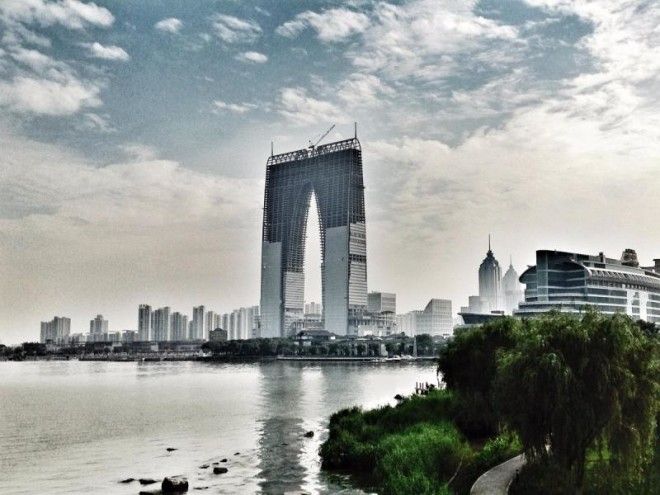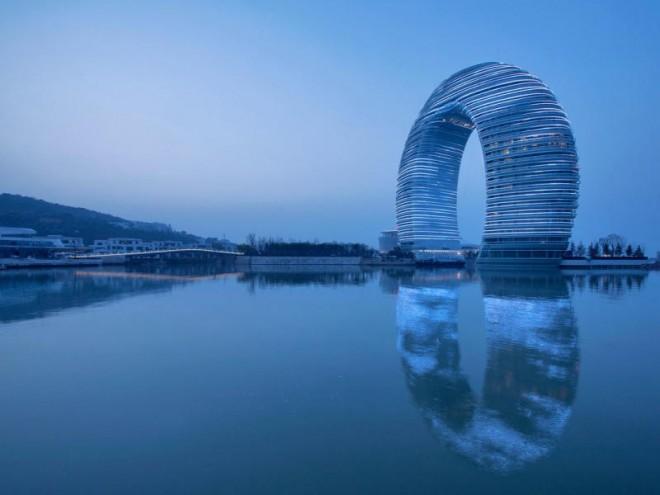But that's all about to change. On Sunday, the Chinese central government released an urban blueprint demanding an end to all mainland construction of buildings that are "oversized", "xenocentric," or "weird." The new directive? Stick to architecture that is "suitable, economic, green and pleasing to the eye," the South China Morning Post reported.
Back in 2014, Chinese president Xi Jinping began his crusade against wild architecture, saying that art should "be like sunshine from the blue sky and the breeze in spring that will inspire minds, warm hearts, cultivate taste, and clean up undesirable work styles."
Xi believes that the art and architecture in China should appeal to the average Chinese citizen, who should also be the main subject of all artwork. His sentiment hearkens back to late Chinese leader Mao Zedong’s idea that the working class in China should not only be the major audience for all art, but that it should be a reflection of their everyday lives.
Here's a roundup of some wacky Chinese buildings that certainly wouldn't be approved under this new state rule.
Beijing's CCTV building is known for its odd "pants" design.
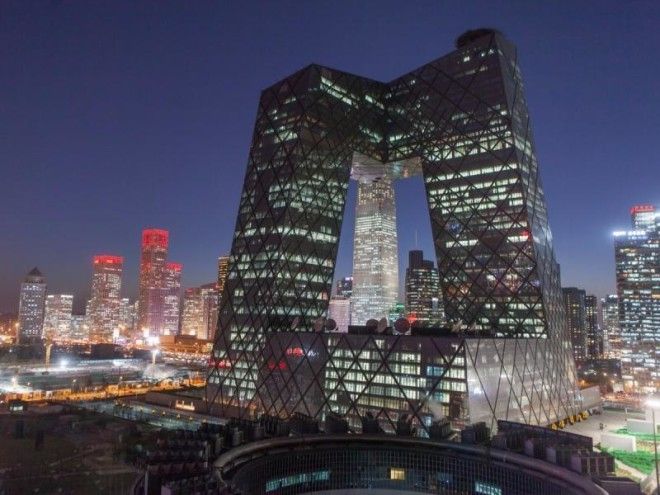
This golden Guangzhou Coin is 33 stories tall, and was designed by an Italian architect. It's the world's tallest circular building.
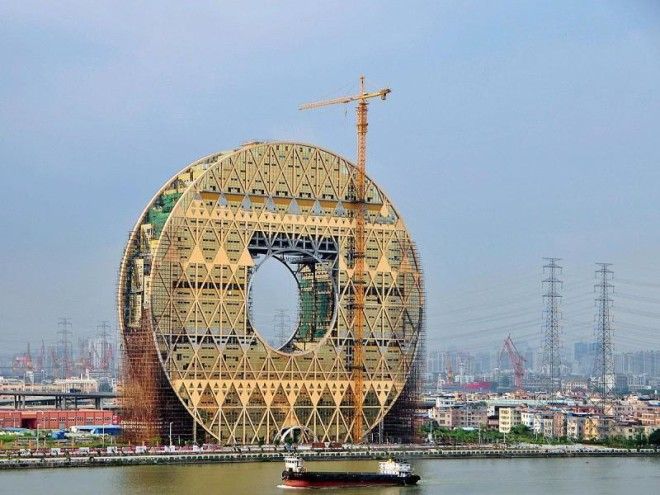
Shaped like a large clay teapot, this convention center in Wuxi has a massive hole through the middle.
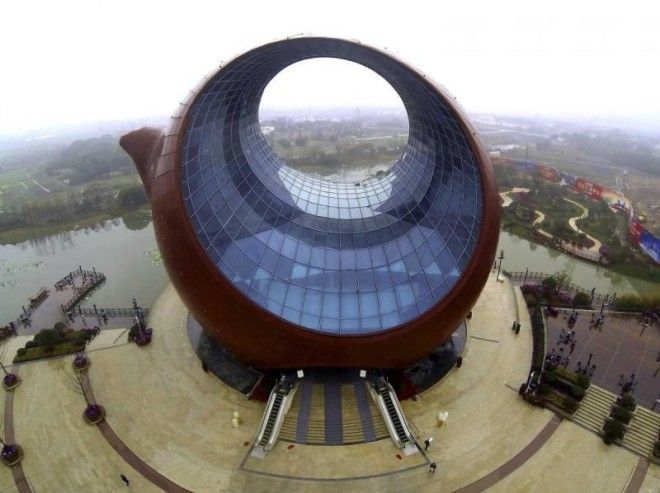
The largest building in the world, the New Century Global Centre is a massive mall in Chengdu with 18 million square feet of floor space. Inside, you can find an artificial beach, a water park, a skating rink, a hotel and conference space, and lots of shopping.
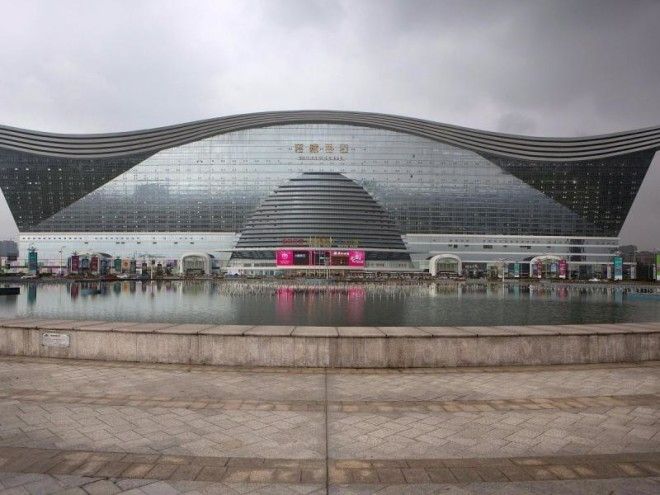
The Sheraton Huzhou Hot Spring Resort appears as an otherworldly gateway, reflecting its elliptical shape over the water. It's sometimes known as the "moon hotel."
Advertising
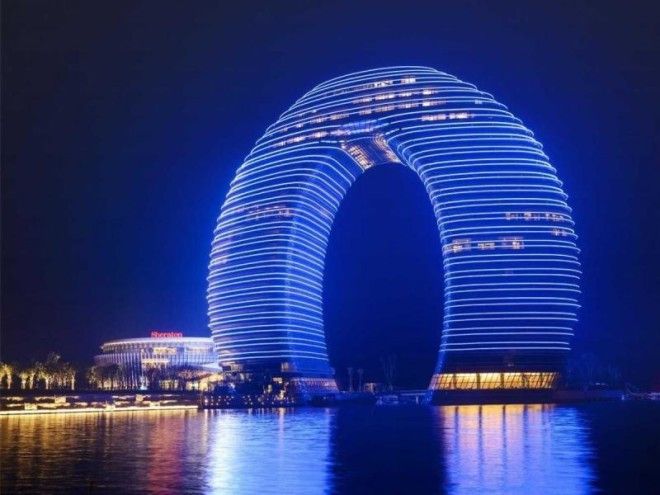
The Oriental Pearl Radio and TV Tower in Shanghai is a familiar part of the city's distinctive skyline.
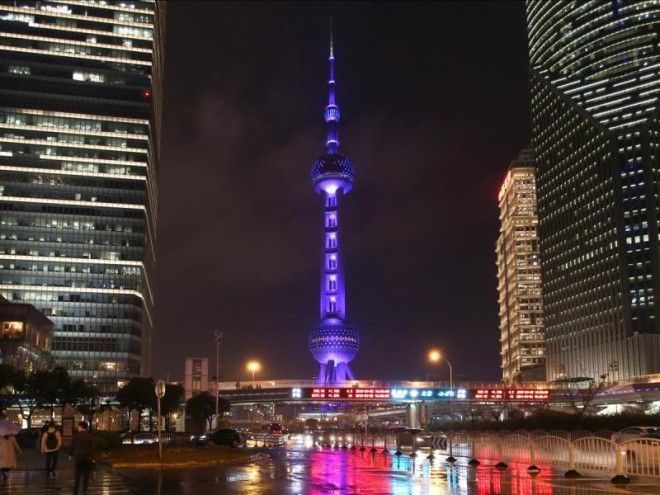
Internationally-renowned architect Zaha Hadid designed this unusual, egg-like collection of buildings in Beijing. The Galaxy Soho complex is connected by raised walkways and surrounded by parkland.
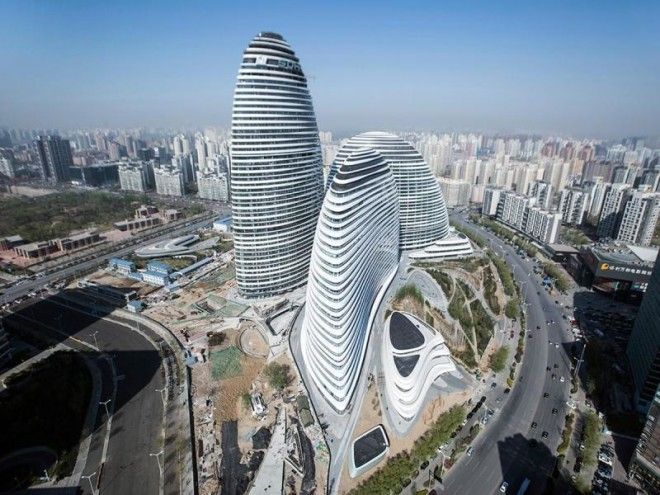
Beijing's National Grand Theater, nicknamed the "egg", is a giant performance space with three main halls for opera, concerts, and plays.
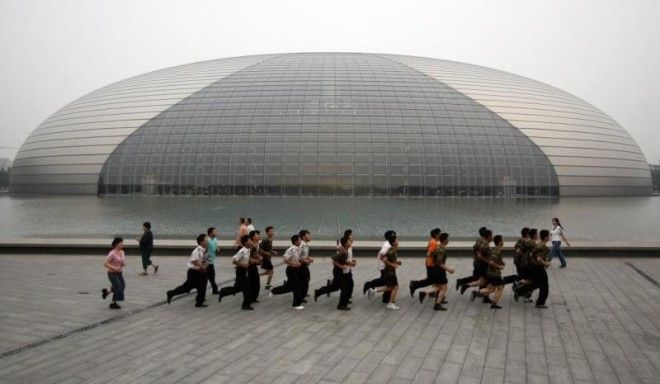
Off the coast of Hainan Province, a series of Stonehenge-like warped cylinder buildings rises out of Phoenix Island. Part of an artificial archipelago marketed as "China's Dubai", this development was designed by Ma Yansong, a disciple of Zaha Hadid.
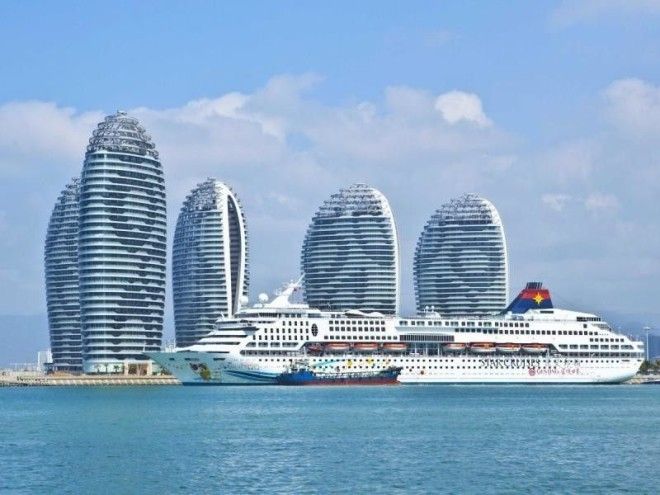
A very literal structure in the shape of a piano and oversized violin — it's used by music students for their rehearsals and performances — this Huainan building was designed by a group of nearby architecture students.
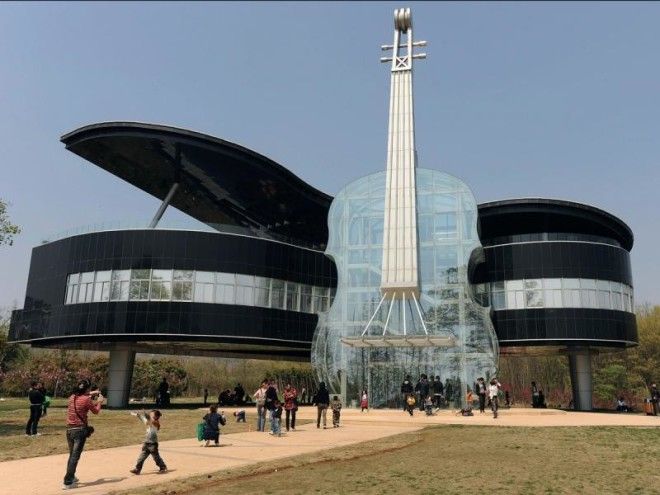
Suzhou's "Gate of the Orient" is also likened to a "pants building" and stands at almost 1,000 feet tall.
